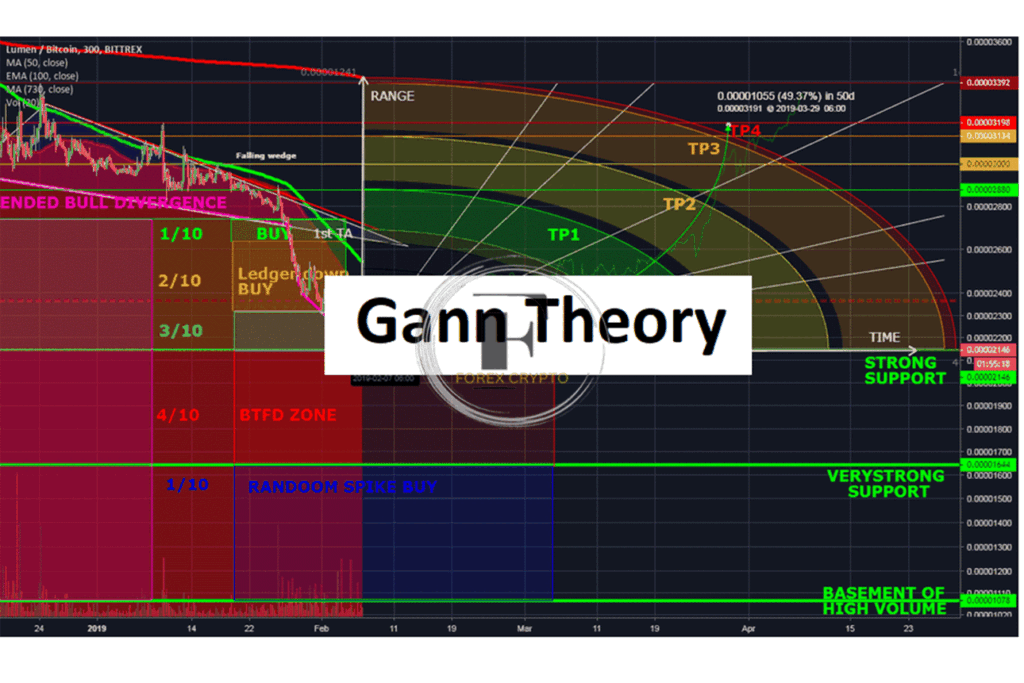Technical analysis methods known as Gann Techniques were created by Wall Street legend and financial trader William Delbert Gann (WD Gann) during the first part of the twentieth century. Gann’s strategies are grounded in geometry, astronomy, astrology, and ancient mathematics, making him one of the most influential traders in astrological trading.

Using Gann Angles
- Gann angles are among the most well-known Gann trading methods (Figure 2). To foretell future price changes, traders utilize Gann angles, calculated by comparing the slant of two moving averages: the price and the time. According to Gann’s theory, the strongest confirmation of movement occurs when time and price form a 45-degree angle. In the context of a 1:1 relationship between time and cost, this 45-degree angle is also known as a 1×1 angle. When prices increase at an angle of 45 degrees above the trend line concerning the timeline, Gann interprets this as a sign of a bull market. For the opposite interpretation, a bear market is signaled when prices fall at an angle of fewer than 45 degrees below the trend line relative to the timeline.
- In Figure 2, Gann noted nine angles that he found to be noteworthy, with the 1×1 angle being his favorite. The other eight are as follows: (8×1) 7.5 degrees, (4×1) 15 degrees, (3×1) 18.75 degrees, (2×1) 26.25 degrees, (1×2) 63.75 degrees, (1×3) 71.25 degrees, (1×4) 75 degrees, and (1×8) 7.5 degrees (82.5 degrees).
Application of the Gann Fan
- The Gann Fan is another method that Gann developed (Figure 3). Using this method, a chart is analyzed from each of the nine angles described by Gann’s theory.
- Gann found that depending on the trend, each direction provides valuable information about where support and resistance levels are likely to be found. When an uptrend is in effect, prices will likely find support at a 1×1 angle, while a drop below this level may indicate a reversal. It is reasonable to assume that after this downturn, prices will continue falling (in this case, the 2×1).
- According to Gann’s theory, a shift to consolidation at the following angle line in the fan is expected after a break of an angled line.

The Gann Grid
If you overlay a sequence of crossing 45-degree angle lines across a price chart, you have a Gann Grid, another tool for indicating price movement (see Figure 4).
It might be a signal when the price line and the Gann Grid lines meet. A reversal in trend may be on the horizon if the Gann lines are crossed.
Cardinal Squares and Other Gann Techniques
- Cardinal squares (Figure 5) are another Gann approach, the most popular of which is the Square of 9. (Figure 6). Numbers are added to a graph spiraling outward, beginning at the tool’s center. The Gann Square of 9 may be easily calculated using any available program.
- Gann’s approaches include the Gann Hexagon (Figure 7) and the Circle of 360 (Figure 8). (Figure 8). The data is applied to a chart using one of these analytic tools to create the desired pattern. Gann Squares, the Gann Hexagon, and the Circle of 360 are all tools used to analyze the market’s connection to time and price to determine the best moment to enter or exit a trade.
- Gann’s Theory is founded on the assumption that there is always a balance between price and time and that there is structure to the sometimes chaotic market fluctuations. The purpose of using Gann methods in trading is to determine the sequence or pattern of these shifts and the upcoming moments of equilibrium. While doing any study, it’s always best to back up the findings with evidence from several sources rather than relying on just one.




Comments (No)